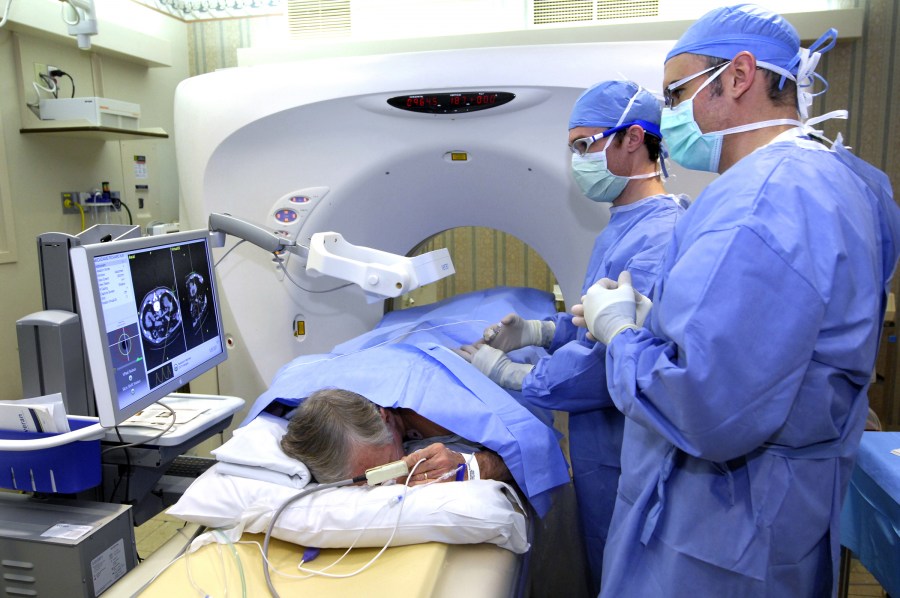
Robert Hooker, M.D., center, and Geoffrey Wile, M.D., use the new Veran IG4 navigation system for interventional radiology procedures. (photo by Anne Rayner)
Navigation system helps guide certain radiology procedures
A new navigation system called the Veran IG4 is improving the safety and efficiency of interventional radiology procedures such as ablations, drainages and biopsies.
Vanderbilt University Medical Center is the first in Tennessee to use this new technology, and there are currently 14 systems in use across the United States.
Just as a GPS device shows a car navigating the roads, the IG4 shows the radiologist's needle navigating the human body.
The patient is first given a traditional CT scan, and that data is loaded into the IG4. Then three small pads are placed on the patient's body in a triangle around the procedure area. These pads sense the movement of the needle and transmit that information to the IG4, which overlays the placement of the needle onto the CT image.
Before the IG4, radiologists would have to take a CT scan each time the needle was moved to confirm it was properly aligned and not in danger of hitting a vital structure. The IG4 only requires one scan, greatly reducing the patient's radiation exposure.
Geoffrey Wile, M.D., assistant professor of Radiology and Radiological Sciences, has been using the new system for six months.
“We use the IG4 for the more challenging work, and it gives us more confidence guiding needles next to vital structures. We're finding we're using it more and more for drainages that might be considered straightforward, but are in younger patients, such as pelvic drains for Crohn’s disease, because it means lower radiation for them,” he said.
The IG4 allows radiologists to guide the needle on whatever path is safest and most efficient, making the procedure faster. It is also capable of compensating for a patient's respiration or other movement, which further enhances safety.
“I really like the system,” Wile said. “A couple of recent cases felt very speedy, and it really added a safety element, especially for patients who are large, very ill or have lesions that are difficult to access.”
The business plan for Veran Medical Technologies was built while its chief executive officer, Jerome Edwards, attended Vanderbilt's Owen Graduate School of Management to obtain his Masters of Business Administration. VUMC then served as a Veran Center of Excellence to provide clinical testing and support as the technology was developed.













